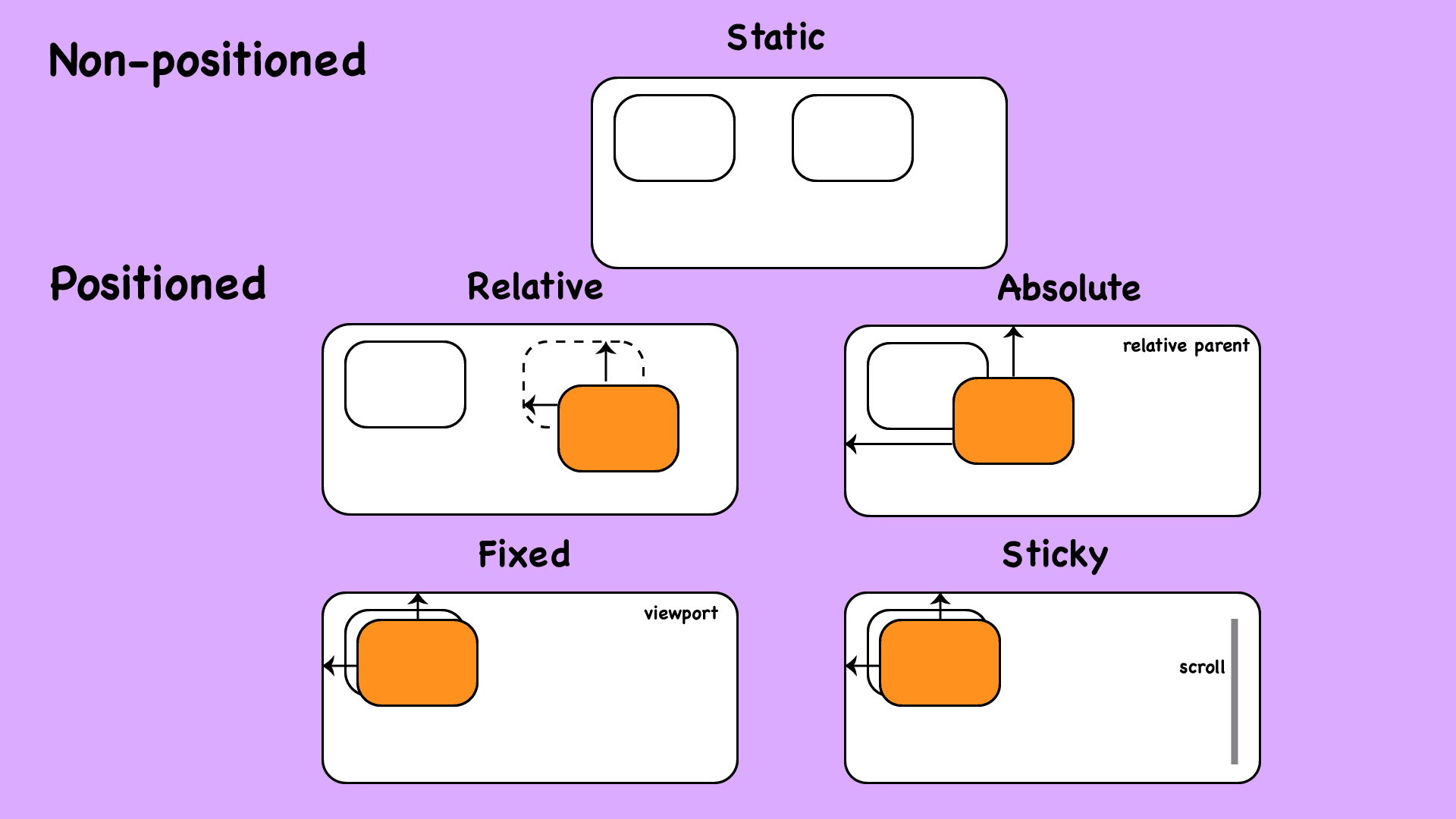CSS: Element Positions

In the realm of CSS element positioning, elements fall into two categories: non-positioned and positioned.
Non-Positioned Element
static position == no position specified
This is the default position for an element. The element will be placed in the normal document flow.
top, right, bottom, left, and z-index properties have no effect on an element with static position.
Positioned Element
You are able to use z-index on a positioned element. Positioned elements are always on top of non-positioned elements.
There are 4 types of position: relative, absolute, fixed, sticky.
relative position
The element with relative position is within the normal document flow. We can use top, right, bottom, left properties to set an offset from its normal position in the document flow.
Compare the demo below with the previous demo, and notice how element 2 moved from its normal location.
absolute position
The element with absolute position is taken out of the normal document flow. We can use top, right, bottom, left properties to define its position relative to its nearest relatively positioned ancestor. If there’s no such ancestor, it will be positioned relative to the <html> element.
Example of element 2 absolutely positioned relative to its nearest relatively positioned ancestor:
Example of element 2 absolutely positioned relative to <html>:
fixed position
The element with fixed position is taken out of the normal document flow. It is then positioned relative to the browser viewport with the top, right, bottom, left properties. It appears fixed in the same position on the screen.
sticky position
The element with sticky position is in the normal document flow, until the content starts to scroll. Then the sticky element will behave like a fixed element. Its offset defined by top, right, bottom, left properties is relative to the nearest ancestor that scrolls.